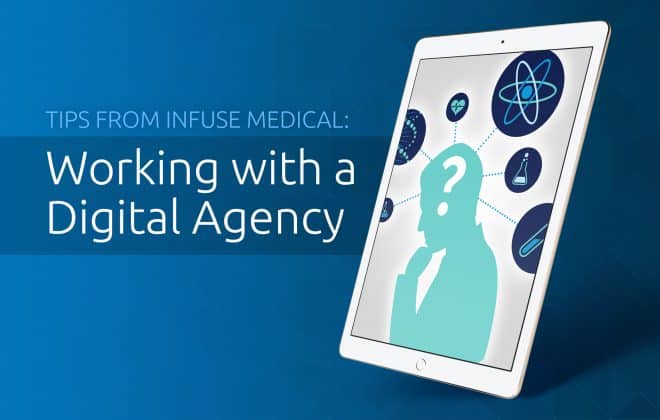Enhancing Software Documentation with Immersive Visuals
Software documentation plays a pivotal role in the success of any software product. It serves as a comprehensive guide for users, a reference for developers, a legal requirement, and even a marketing tool.
However, traditional documentation often needs to engage users effectively. It is where the integration of immersive visuals comes into play, revolutionizing the way software documentation is presented and consumed.
Importance of Software Documentation
Software documentation serves multiple purposes, making it an indispensable asset for software publishers.
- Clarity for Users
Clear and concise documentation helps users understand the functionalities of the software, enabling them to utilize it to its full potential without frustration or confusion.
- Support for Developers
Comprehensive documentation assists software developers in understanding the intricacies of the software’s codebase, facilitating maintenance, updates, and troubleshooting.
- Legal Compliance
In many industries, thorough documentation is required for regulatory compliance, ensuring that the software meets necessary standards and guidelines.
- Marketing Tool
Well-presented documentation can also serve as a marketing tool, showcasing the features and capabilities of the software to potential customers.
Understanding Immersive Visuals
A. Definition and Types
Immersive visuals refer to various graphical elements incorporated into the documentation to enhance user engagement and comprehension.
- Infographics
Infographics present complex information in a visually appealing and easy-to-understand format, utilizing graphics, charts, and text to convey key concepts.
- Interactive Diagrams
Interactive diagrams allow users to explore software functionalities dynamically, providing a hands-on learning experience.
- Videos and Tutorials
Videos and tutorials offer step-by-step guidance on using the software, catering to different learning styles and preferences.
- Virtual Reality (VR) Experiences
VR experiences immerse users in simulated environments, offering a unique and interactive way to learn about software functionalities.
B. Benefits of Immersive Visuals
The integration of immersive visuals offers several benefits over traditional text-based documentation.
- Enhanced Understanding
Immersive visuals facilitate better comprehension of complex concepts, as users can visualize information more intuitively.
- Increased Engagement
Visual elements capture users’ attention and encourage them to explore the documentation further, leading to increased engagement and retention.
- Improved Retention
Users are more likely to remember information presented through immersive visuals, as it appeals to their visual and spatial memory.
- Simplified Complex Concepts
Immersive visuals break down complex concepts into digestible chunks, making it easier for users to grasp and apply the information.
Best Practices for Integrating Immersive Visuals
A. Assessing User Needs
Before incorporating immersive visuals into documentation, it’s essential to understand the specific needs and preferences of the target audience.
- Identifying Pain Points
Identify areas of the software that users find challenging or confusing and prioritize the creation of visuals to address these pain points.
- Analyzing User Behavior
Analyze user behavior metrics, such as page views and bounce rates, to identify opportunities for improving documentation through visuals.
- Gathering Feedback
Solicit Feedback from users through surveys, interviews, or user testing sessions to understand their preferences regarding the presentation of documentation.
- Conducting Usability Tests
Conduct usability tests to assess the effectiveness of immersive visuals in improving user comprehension and engagement.
B. Choosing the Right Visuals
Selecting the appropriate visuals is crucial to ensure that they effectively communicate the intended message and enhance the user experience.
- Matching Visuals to Content
Choose visuals that align with the content and objectives of the documentation, ensuring that they complement rather than distract from the text.
- Considering Accessibility
Ensure that visuals are accessible to all users, including those with disabilities, by providing alternative text descriptions for images, providing transcripts for videos, and ensuring compatibility with screen readers.
- Balancing Information Density
Strike a balance between providing sufficient information in visuals without overwhelming users with too much detail, ensuring clarity and brevity.
- Maintaining Consistency Across Platforms
Ensure consistency in visual design and presentation across different platforms and devices to provide a seamless user experience.
Tools and Technologies for Creating Immersive Visuals
A. Graphic Design Software
Various graphic design software options are available to create immersive visuals tailored to software documentation needs.
- Adobe Creative Suite
Adobe Creative Suite offers a comprehensive set of tools, including Photoshop for image editing, Illustrator for vector graphics, and InDesign for layout design.
- Canva
Canva provides a user-friendly platform with pre-designed templates and drag-and-drop functionality, making it accessible to users with varying levels of design expertise.
- Sketch
Sketch is a popular choice among designers for its intuitive interface and robust features, particularly suited for creating vector-based illustrations and user interface designs.
- Figma
Figma is a collaborative design tool that enables real-time collaboration and prototyping, making it ideal for teams working on software documentation projects.
B. Animation and Video Editing Tools
Animation and video editing tools are essential for creating dynamic visual content such as tutorials and interactive demos.
- Adobe After Effects
Adobe After Effects is widely used for creating motion graphics and visual effects, allowing users to add animations and special effects to videos.
- Blender
Blender is a powerful open-source 3D creation suite suitable for creating animations, simulations, and visual effects for software documentation.
- Camtasia
Camtasia is a user-friendly video editing software with screen recording capabilities, making it ideal for creating software tutorials and demonstrations.
- Final Cut Pro
Final Cut Pro is a professional video editing software for macOS users, offering advanced features for editing and producing high-quality videos.
C. Virtual Reality Platforms
Virtual reality platforms offer an immersive and interactive way to present software documentation, allowing users to explore virtual environments and interact with content.
- Unity
Unity is a versatile platform for creating interactive 3D and 2D experiences, suitable for developing virtual reality tutorials and simulations.
- Unreal Engine
Unreal Engine is another popular choice for creating immersive experiences, and it is known for its high-quality graphics and advanced simulation capabilities.
- Oculus Medium
Oculus Medium is a VR sculpting tool that enables users to create 3D models and virtual environments, which is ideal for adding interactive elements to software documentation.
- Google Tilt Brush
Google Tilt Brush allows users to paint in 3D space using virtual reality, offering a creative way to visualize concepts and ideas for software documentation.
Implementing Immersive Visuals in Software Documentation
A. Embedding Visuals in User Manuals
User manuals can benefit from the integration of immersive visuals to enhance user understanding and engagement.
- Step-by-step Guides
Create visual step-by-step guides that walk users through everyday tasks and workflows, using screenshots, diagrams, and annotations to provide clarity.
- Troubleshooting Visuals
Include troubleshooting visuals to help users diagnose and resolve common issues, such as error messages and system configurations.
- Interactive FAQs
Develop interactive FAQs with clickable elements and multimedia content to address frequently asked questions and troubleshoot problems effectively.
- Comparative Charts and Graphs
Utilize comparative charts and graphs to illustrate differences between software versions, pricing plans, or feature sets, aiding users in decision-making processes.
B. Integrating Visuals in Online Help Systems
Online help systems can leverage immersive visuals to provide on-demand assistance and support to users.
- Contextual Help Icons
Integrate contextual help icons throughout the software interface, linking to relevant visual guides and tutorials for specific features and functionalities.
- Video Walkthroughs
Offer video walkthroughs for complex processes or workflows, allowing users to follow along at their own pace and pause or rewind as needed.
- Searchable Visual Databases
Create searchable visual databases where users can find relevant visuals based on keywords or categories, facilitating quick access to pertinent information.
- Gamified Learning Modules
Develop gamified learning modules that combine interactive visuals with quizzes and challenges, making learning about the software fun and engaging.
Measuring the Impact of Immersive Visuals
A. Analyzing User Engagement Metrics
Analyzing user engagement metrics is essential for evaluating the effectiveness of immersive visuals in software documentation.
- Time on Page
Monitor the average time users spend on pages with immersive visuals compared to text-only pages, identifying areas of high engagement.
- Click-through Rates
Track click-through rates on visual elements such as videos, diagrams, and infographics to assess user interaction and interest.
- Interaction Heatmaps
Use interaction heatmaps to visualize user interactions with visual elements, identifying areas of focus and interest within documentation.
- Conversion Rates
Measure conversion rates for actions such as downloading software, subscribing to services, or completing tutorials, correlating them with the presence of immersive visuals.
B. Gathering User Feedback
Collecting user feedback is crucial for understanding user preferences and improving the effectiveness of immersive visuals in software documentation.
- Surveys and Questionnaires
Distribute surveys and questionnaires to users to gather feedback on their experience with immersive visuals, including likes, dislikes, and suggestions for improvement.
- User Testing Sessions
Conduct user testing sessions where participants interact with documentation containing immersive visuals, observing their behavior and soliciting Feedback in real-time.
- Social Media Listening
Monitor social media channels for mentions and discussions related to software documentation, gauging user sentiment, and identifying areas for improvement.
- Online Community Forums
Engage with users on online community forums and discussion boards to gather insights into their experiences with software documentation and preferences for visual content.
Conclusion
Software documentation is a critical component of the user experience, and enhancing it with immersive visuals can significantly improve user comprehension, engagement, and satisfaction. By following best practices, leveraging the right tools and technologies, and measuring the impact of visuals on user behavior, software publishers can create documentation that not only serves its functional purpose but also delights and empowers users.
Blog Categories
- 3D Animation (5)
- Company News (2)
- Design Graphics (1)
- Healthcare Operations (7)
- Industry News (9)
- Medical Training (1)
- Sales Enablement (5)
- Software Developing (3)
- Virtual/Augmented Reality (11)




